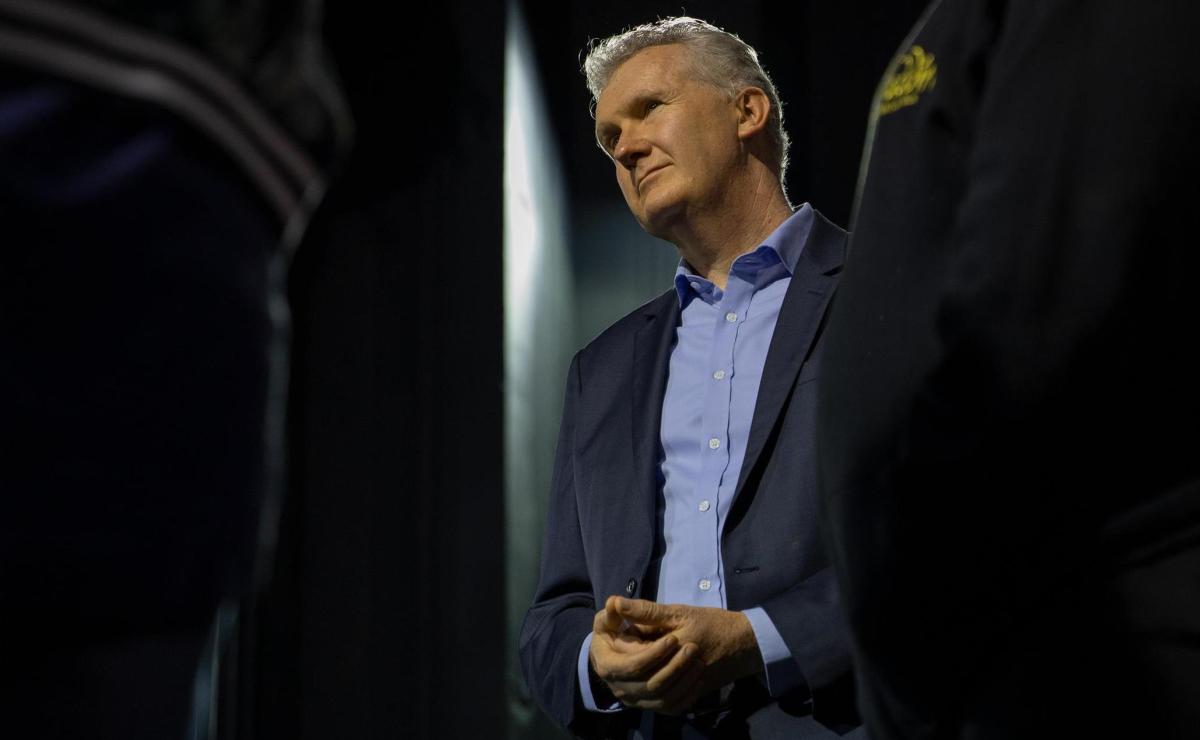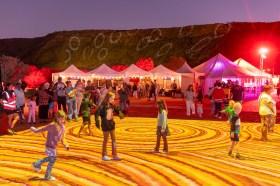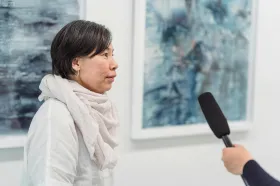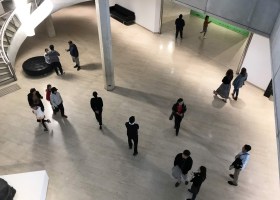When Federal Arts Minister Tony Burke addressed journalists on the steps of Sydney Opera House last week at the sector’s tax reform summit, his opening statements revealed a thing or two about his government’s approach to arts policy evaluation.
Policy evaluation: quick links
Policy evaluation: Revive
Included in Burke’s opening remarks were nods to Labor’s National Cultural Policy, Revive – a policy he noted was now three years into its five year cycle, and therefore almost ready to be reviewed.
In pre-empting the review process – which the Minister says will commence in 2026 – he was quick to present some economic data showing the positive effects Revive is already having on the sector.
‘Year on year [comparing 2022-23 to 2023-24] we’ve got a 6.6% growth in economic activity in the arts sector,’ Burke said.
‘That’s 6.6% at the same time that the GDP was growing at 4.1%. A $67 billion industry. Our cultural policy was called Revive, and that has begun.’
Indeed, these figures point to some increases in arts activity from July 2023 to June 2024 – which is the first 12-month period that the Federal Government’s then-new, $880 million (over five years) Revive investment could be starting to take effect, one might argue.
But (and to his credit), the Minister then conceded that ‘obviously, that’s not going to be the lived experience of everyone who works in the sector’, adding that ‘there’s plenty of areas in the sector that are doing it really tough’.
‘Plenty of areas in sector doing it really tough’
This last comment, which acknowledges how many artists and arts companies are currently ‘doing it tough’, will no doubt draw the ire of those – particularly in the small-to-medium and independent sectors – whose “tough” circumstances are hardly new, and where prolonged conditions have curtailed their capacities for a very long time. (For more on this, see Eamon Flack’s recent article for The Guardian.)
As Flack points out in his Guardian piece, from his perspective, ‘it all begins – or ends – with policy. Like our roads, hospitals, universities, schools and power grids, our cultural infrastructure is the responsibility of government – not corporate sponsors and philanthropists, which are increasingly relied on by our biggest institutions.’
But as the Minister’s latest media address on the subject reveals, his government’s approach to arts policy (especially its evaluation) doesn’t appear to favour ideas of arts’ collective benefits to society in the same way that the funding of roads, hospitals and schools does.
Read: Meanjin’s value? We’ve done some calculations – and it’s not about money
Rather, Burke’s speech led with the arts’ economic performance indicators based on the ABS’s statistical studies.
The obvious question to ask at this point (and it’s a question that arts academics and policy researchers have been asking for ages), is: how helpful is this economics-heavy approach to arts policy evaluation in a sector whose value extends well beyond profit and loss spreadsheets in its contribution of less tangible benefits to communities and individuals over time?
How can a government or economist quantify the value of the music, books or TV series that assisted people’s mental health during COVID lockdowns? (Just one example of many one could draw on to illustrate this point).
Read: NSW Arts Minister amps up outdoor events while arts venues suffer
Therefore, one can only hope that these – admittedly far more difficult – approaches to policy evaluation are considered important as the Federal Government’s Revive review process kicks into gear next year.
Long view of arts’ economic contributions look different
But aside from taking this kind of balanced approach to arts policy review and evaluation, when the time comes for those who are involved in Revive’s review process to pour over some of the raw economic data, even some of those figures reveal a concerning long-term trend.
According to the Arts Minister’s own government’s latest ABS report, since 2014-15, the pace of growth in cultural and creative activity has been slower than the pace of growth for the Australian economy. As a share of GDP, cultural and creative activity declined from 2.9% in 2014–15 to 2.5% in 2023–24.
While not a huge dip, this bigger picture data show that, while in the financial year 2022-23 to 2023-24 the arts’ economic contributions outpaced our GDP growth, overall, the arts sector’s contributions are lagging not growing when viewed in relation to the wider economy over the long-term.
Economic view important – but not a complete picture
So, in fairness to the Minister at this appearance at the Opera House last week, while he could have gone further in affirming the value of arts activity in a more holistic sense, his address was appropriately tuned-in to the subject of that particular day – namely, the arts tax reform summit (which was essentially a meeting about economic policy drivers).
After this important gathering to share ideas for new tax incentives schemes for our sector – including ideas to offers potential investors in arts activities similar tax incentives to those recently legislated for our screen sector – it is also important to ensure that the shape of our current and future arts policies, and the ways we review and evaluate them, extend beyond assessments of our economic performance focused heavily on the study of the statistical data we have available to us.
As the Minister himself said last week, ‘It’s called a cultural policy for a reason. This goes right to the heart of who we are, how we see ourselves, how we see each other, and how the world comes to know us.’
Let’s hope that the way we choose to see and evaluate our contributions, and how the world gets to know us as a result of those things, is in a multi-dimensional way and not one that is fixated purely on economic value.






